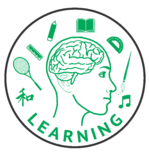Positive Behaviour Support
At St. Thomas the Apostle, we have embedded the Whole School Approach to Positive Behaviour Support (WSAPBS) endorsed by our governing body, DOSCEL. The WSAPBS targets the improvement of school climate, which has been found to be the most significant impact on student outcomes (Hart, 2014).
All members of the school community have a significant role to play in supporting a whole school approach to positive behaviour. Where all members work collaboratively, each child has the opportunity to fully participate, engage in the process of schooling and become a successful learner.
The characteristics of our whole school positive behaviour approach include prevention, instruction, use of evidence-based practices, and utilising data for informed decision making. A positive behaviour approach supports teaching and learning environments so that the academic outcomes of students are maximised. This provides a structure and process for our school community and classroom procedures so that a positive social culture is established.
Principles underpinning this positive behaviour approach promote high expectations for all students at St. Thomas the Apostle through the understanding that:
- Students are central to all decision making and action:
- The safety of all students is a priority
- A culture of learning is prioritised
- Expert teacher practice is critical to student learning success
- Expert teaching practices are evidence-based
- Leadership is committed and provides clear direction
- Schools work in partnership with parents and the wider community
Our School wide expectations are linked to our School’s strategic intent:
Every child is known and connected to their community, every child is safe and engaged in their learning and every child experience explicit teaching at their identified point of need.
These are also linked to the Personal and Social Capability of the Victorian Curriculum. Other approaches and strategies are implemented to support the whole school approach including elements of Choice Theory & Reality Therapy Principles.
Choice Theory
At St Thomas the Apostle, we use Choice Theory as an approach for students to understand their behaviour and how to manage themselves both in good times and bad. Choice Theory is based on the work of Doctor William Glasser and it is an approach, not a program. It builds resilience within students and helps them to identify how they are feeling, why they are feeling that way and what they can do to manage these feelings. Choice Theory explains how and why we make the choices that determine the course of our lives. It states that all we do is behave, that almost all behaviour is chosen, and that we are driven by our genes to satisfy five basic needs – survival, love & belonging, power, freedom and fun. In practice, the most important need is love and belonging, as closeness and connectedness with the people we care about is a requisite for satisfying all of our basic needs. We have embraced the work of Mary Ellen Davis, a psychologist and expert on Choice Theory. She has been working with staff on how we behave, what our behaviours might be communicating and why.
Positive Behaviour History at St Thomas the Apostle:
In 2019, STAPS students were invited to design a logo which represented Safety, Respect or Learning. Students discussed this in their classes and then voted on the most appropriate design in their Community. Each Community presented their chosen design and as a school we voted on the following winners:
Safety is the physical and emotional wellbeing of myself and others.
Respect is treating others as we would like to be treated.
Learning is challenging ourselves to be the best we can be.
Responding to Behaviour on the Playground:
Through our Whole School Approach to Positive Behaviour work, we are using simple questions with our students to promote Safety, Respect and Learning when we face challenges and are required to act or seek support.
-
What are you doing?
-
What should you be doing?
-
What are you going to do now?
-
Do that thank you
These questions are also implemented in the classroom when redirecting students to the required learning is needed. These questions may support and scaffold conversations you have with your children at home when they are faced with challenges and need guidance in the choices they make. We are constantly learning and we know for students taking risks is key to developing confidence with new learning opportunities.
Carol Dweck, an American psychologist, tells us that reminding students that they have mastered things they once got ‘wrong’, allows them to understand their place on the learning curve and stresses that through ongoing effort and persistence they will eventually achieve. Giving valuable feedback shows students how they can grow and fuels the idea that risks are opportunity! These questions above provide one such opportunity.









